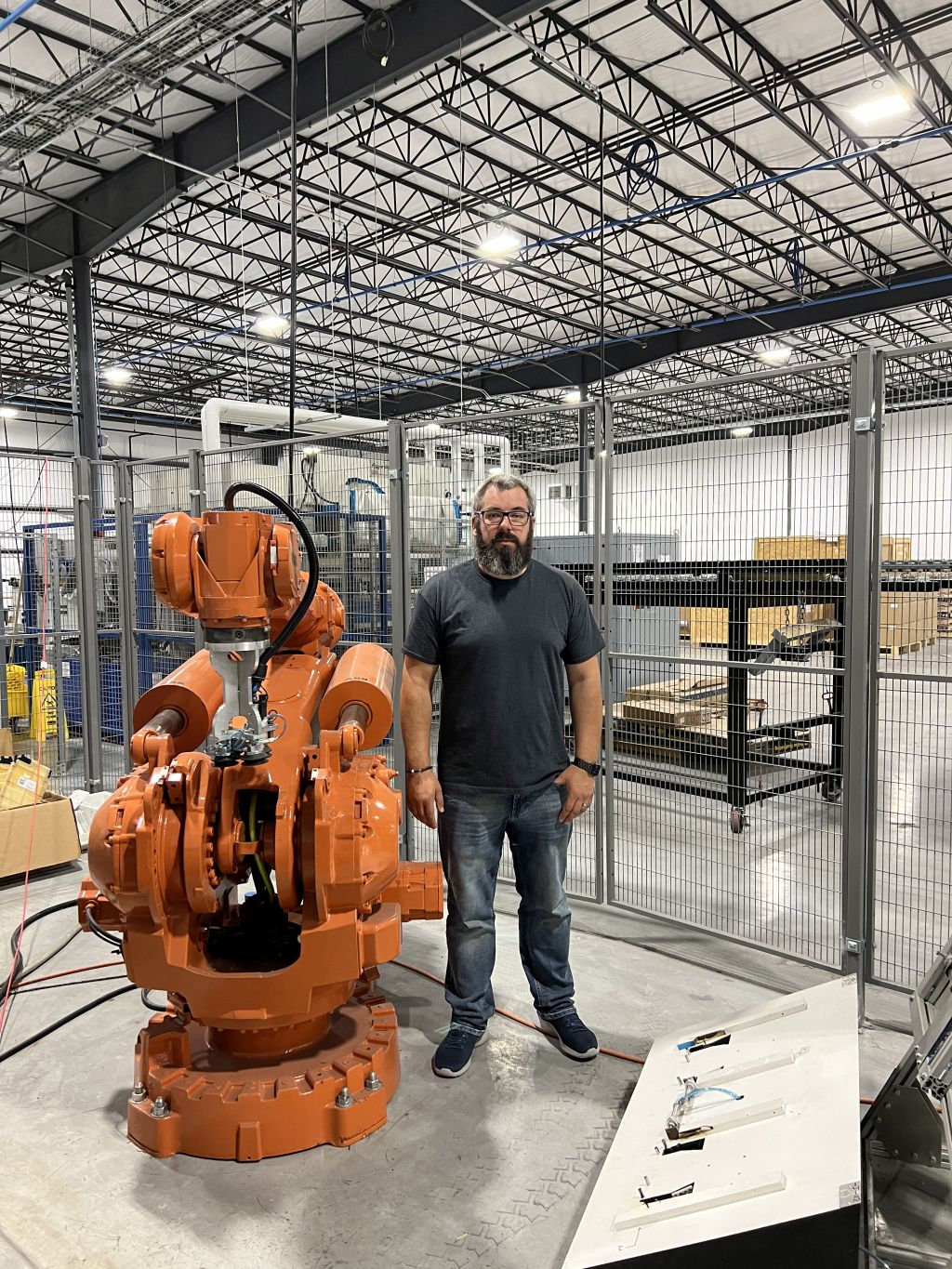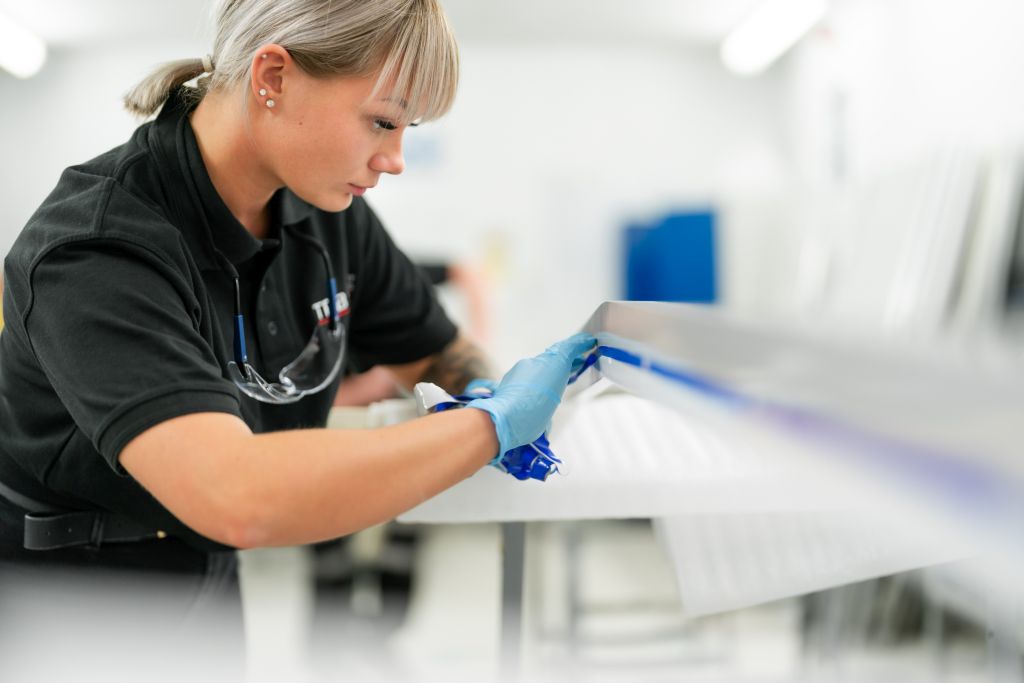Work smarter, not harder

TRB Lightweight Structures’ production engineering manager, Gatis Dudelis looks at some current and future applications of composites, and introduces a novel technique that has cut manufacturing times from hours to minutes.
The strength, versatility and weight savings offered by composite materials have transformed the engineering of parts in various industries - from aerospace and automotive to rail and oil & gas. However, manufacturing these materials is often time-consuming and costly, limiting their accessibility.
Composites can be used to create more resistant, durable and lightweight structures than traditional metal parts, as well as offering the ability to form large parts from a single piece, increasing strength and minimising the risk of failure. These properties make composites extremely attractive, especially with the increasing need for lighter materials to help companies deliver on their sustainability goals and propel them towards a ‘greener’ future.

Aerospace has long benefited from reducing aircraft weight by using composite parts, with each kilogram shed resulting in fuel savings – especially pertinent as oil prices soar – and other industries are now taking this same approach. For example, trimming down the weight of a train – or a fleet of trains – will equate to significant daily energy savings, reducing costs and contributing to an eco-friendlier operation.
Kick out old traditions
The challenge now is to make lightweight composites more widely available, as the manufacturing process represents a significant barrier to many companies. Traditional manufacturing techniques are extremely labour intensive, often requiring multiple personnel working for hours or days to create even a single product. This is usually after months or sometimes years of design and R&D just to get to the production phase, consuming incredible resources over the entire development cycle. Therefore, making processes more efficient in any phase – with more productive use of labour an obvious area to start – will help reduce costs, and potentially make composites more broadly available to innovative and sustainable technologies.
Automation has the potential to lower financial barriers, and it has long been used to speed up and improve the quality of manufacturing. In fact, over 100 years ago, the Ford Motor Company pioneered a car production assembly line using automation, reducing car assembly times from 12 hours to one and a half hours, (according to Fabrice Boisset’s 2018 ‘The History of Industrial Automation in Manufacturing’ report). Manufacturing technologies have expanded enormously since then, owing to the development of programmable robotics and automated workflows, and these principles have recently been applied in composite part production. To this end, a novel technique has been developed to combine snap-cure resins and prepreg materials with cutting-edge robotics and automation to form composite parts in just minutes. This innovation represents a giant leap towards making these lightweight solutions available to a wider range of applications.
Outsourcing the legwork
Automation has been incorporated throughout this novel manufacturing process, beginning with prepreg fabrication on the production line, where specific resin chemistries and fibre profiles are combined according to the customer’s requirements for fire or impact resistance. The prepreg is then cut and layered up via a robotic arm system, where it is automatically fed into the precision press system that stamps and cures the component in a fraction of the time historically required for thermoset materials. The component is then ready for automatic deflashing, and for inserts or liquid gasket application if required.

This innovative process is already being employed to make lightweight battery boxes for electric vehicles. These structures are strong, rigid and impermeable, and have up to 100 aluminium pins added after the machining phase to create an airgap between the battery cells and the housing to allow airflow and prevent overheating. These steps are pre-programmed and automatically performed by the state-of-the-art robotic production line, resulting in a fully functional product that is ready for post-manufacturing modifications.
The introduction of this workflow has also eliminated numerous unskilled and repetitive tasks, freeing up staff to be retrained and allocated to other positions – further increasing efficiency across the company. Personnel are still required to oversee production, load materials – such as the resin for prepreg formation and consumables to ensure the robots function properly – and perform light maintenance, including checking conveyor roller tension. Therefore, this innovative manufacturing workflow allows staff to focus on more challenging tasks and for their time to be used more effectively, while significantly increasing throughput. Furthermore, machine accuracy eliminates the inevitability of human error, with precise repetition of the exact alignment, pressure and temperature generating high-spec composite parts time and time again.
This ground-breaking method enables the creation of finished composite parts at a fraction of the time and cost of traditional methods, while still meeting the exact specifications of the individual customer. Price has historically been a pain point in composite production – due to the labour-intensive laying up process required – but this end-to-end automation solution could make them far more broadly available, especially for industries looking for lighter, more sustainable solutions.








